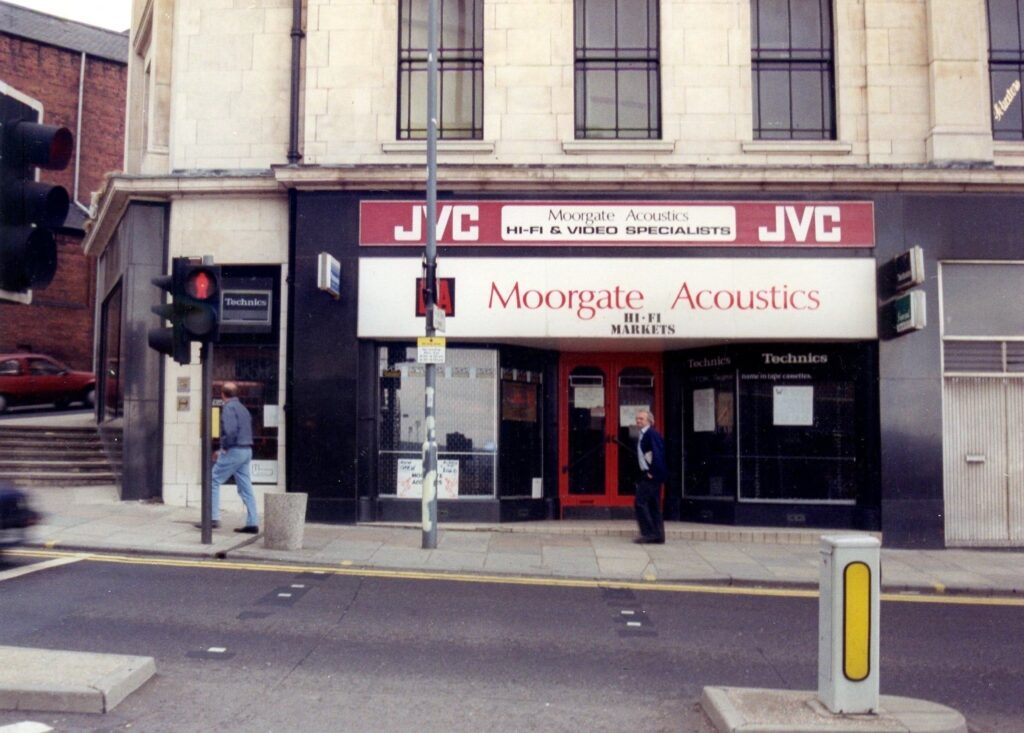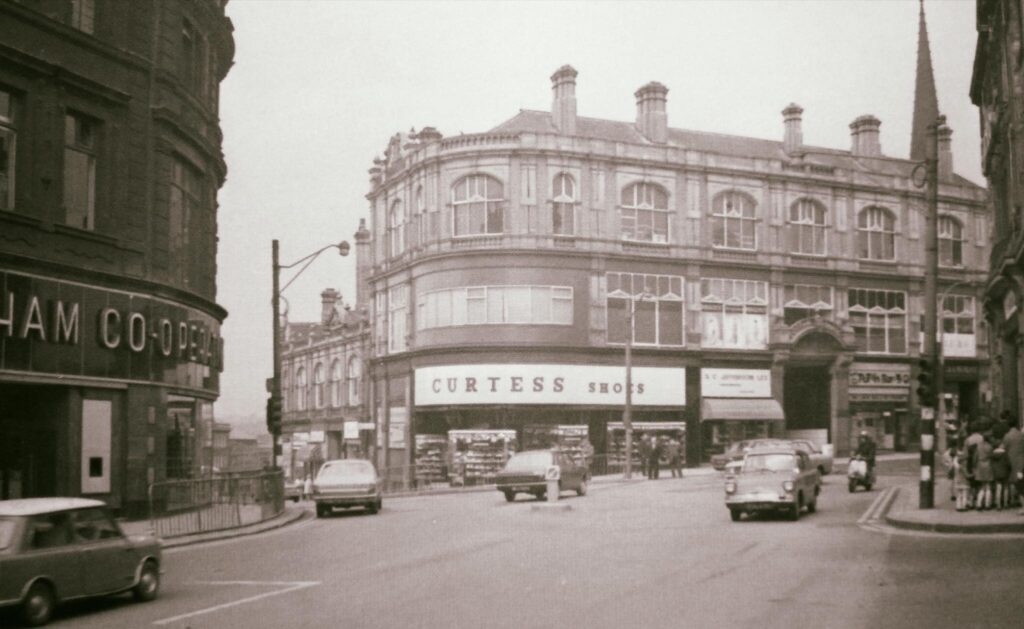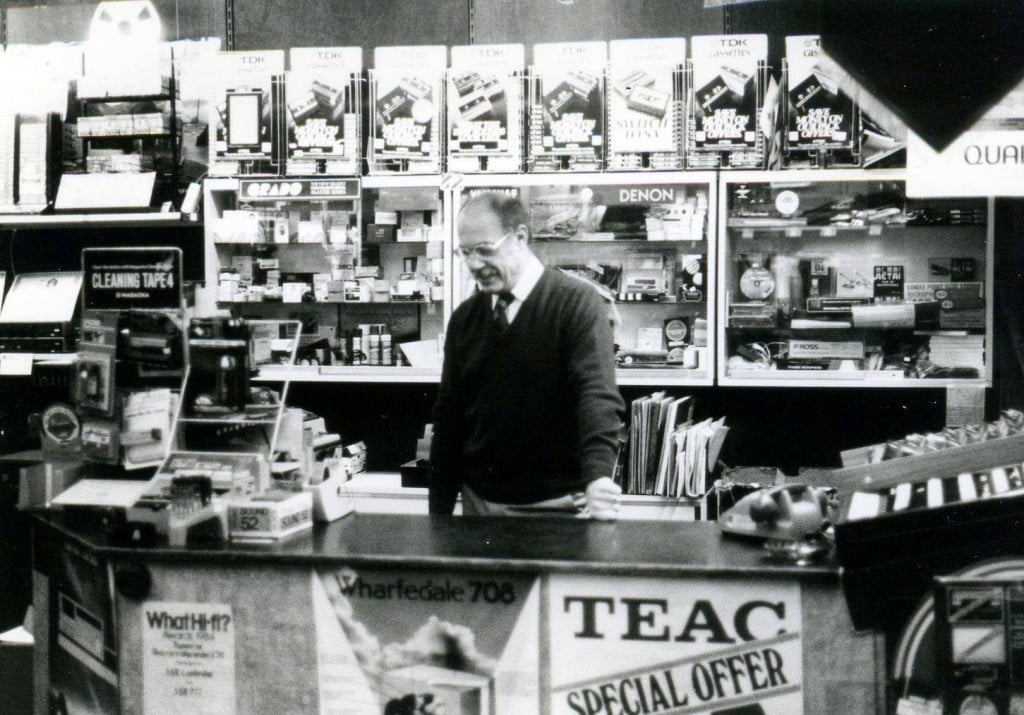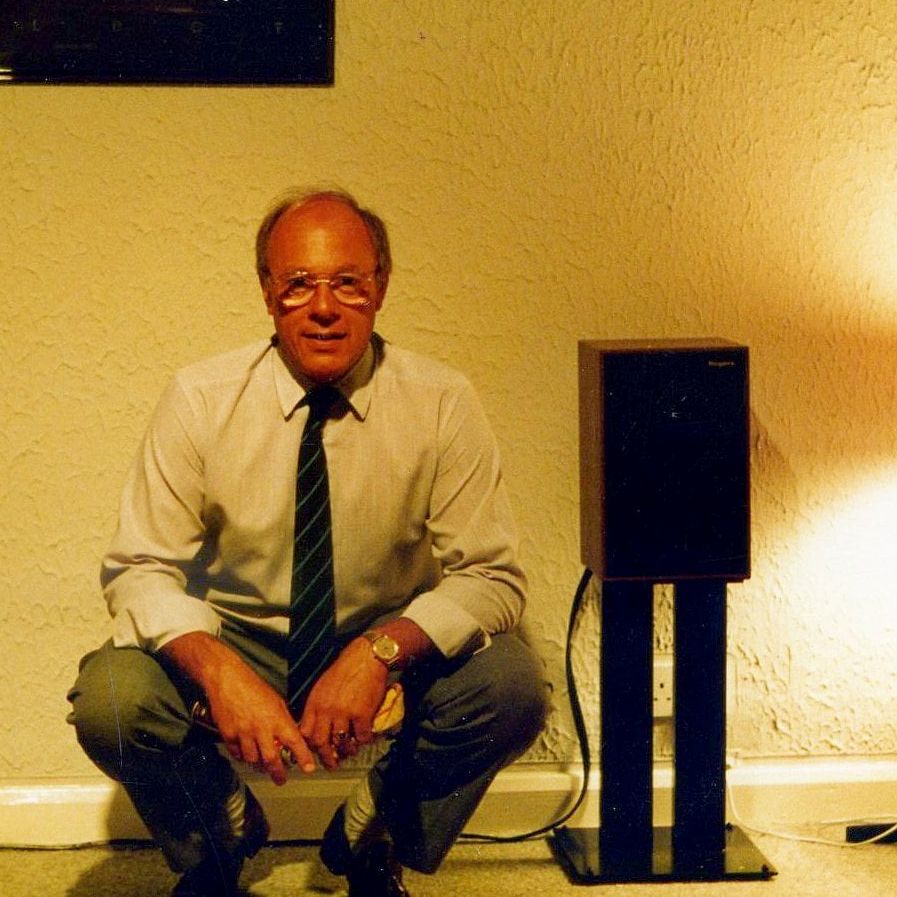From enthusiasm and a love of music

Some customers from our Facebook group have enquired about our origins and it has recently been a time of reflection for me so I started to give thought and write some of it down. I hope it is interesting to you but of course if not....scroll on!
Moorgate Acoustics was started by Keith Hobson in 1981. My dad was an engineer by trade and his passion was music. He discovered that a decent system allowed him greater enjoyment of music.
Keith was an engineer by trade. But after twenty or so years grafting he wanted to try and do something that involved his passion. He answered an advert for a salesperson to sell 8-Track cassette players placed by a company called Diesel Electric in Sheffield. He got the job and spent a few years on the road selling 8-Tracks. Diesel Electric then offered him the opportunity to manage a new hi-fi store they were opening on Barclay Precinct in Sheffield. Sound 70's was born.
Sound 70's was primarily a JVC centre but back then JVC was a very different beast to what it became. This was before stack and mini systems and home cinema and JVC had a good reputation for reasonably affordable hi-fi. Their JAS-11 integrated amplifier was the NAD 3020 of its time. They also made decent turntables and even some passable loudspeakers.
Keith wanted to add products that could offer even better performance and took on loudspeaker brands Like Tangent, Tannoy, Allison and Acoustic Research. At this time Hi-Fi was a very high priority for most people and the High Street had Laskeys, which acted as a window to introduce people to better quality equipment. People out doing their weekly shop could see equipment which we would consider to be high fidelity. Brands like Mission, Quad and many others were "visible". Hi-fi is no longer visible on the High Street and has suffered as a result
There were some good years at Sound 70's but as time passed Diesel Electric decided to introduce in-car products. Keith felt this was a mistake and told them so. He felt he was somewhat at loggerheads with the owners as to how the business should be run and could not explore his ideas or add some of the better brands that he was interested in selling. As the 70's became the 80's, Diesel Electric wound the business up and made him redundant.
Keith thought long and hard about what he wanted to do and decided that he would do some research and look into opening his own Hi-Fi shop. This became a reality when Moorgate Acoustics opened its doors in 1981.
Moorgate opened in Rotherham at the foot of Ship Hill. He called it Moorgate Acoustics because it was close to Moorgate, the area where the solicitors offices were based. He would have preferred to open in Sheffield , however at the time suppliers were in the habit of only supplying one or two retailers in each city. Sheffield had four hi-fi shops and as a result Keith realised he would be unable to get the agencies he wanted for the products he hoped to sell and so Rotherham, a nearby satellite town was chosen.

Moorgate started with the better Japanese brands and a fairly wide range of loudspeakers, mostly from British manufacturers. Electronics from JVC, Sansui, Pioneer and Denon and loudspeakers from AR, Castle, Wharfedale, Mordaunt-Short and Celestion. There were some video recorders and some televisions too. The store also sold cassettes, cables of all kinds and styli. These items represented a huge part of the company's business.
Keith brought one member of staff with him from the Sound 70's days. His name was Robert Iwan.
The early 80's was the time of the comparator. This was a device that enabled a very wide range of equipment to be plugged in at once. Very quickly we could show people what a record player sounded like played through half a dozen amplifiers and through just as many speakers. This was before the time of single speaker demonstrations. Now we'd frown at the use of a comparator but back then it was considered the best way to choose a component.
Keith also found that many of the suppliers he particularly wanted to stock were unwilling to supply a new business. The business was untested and he wasn’t well known. This changed once the company had a few years trading under its belt. Business was steady and was growing in a sustainable and manageable manner. I should point out that my dad is a quiet man and not a typical salesman by any means. But his experiences as a customer, his time spent visiting other shops and hi-fi shows and the mistakes he'd seen made at Sound 70's gave him a lot of perspective and ideas. He was able to put these into practice and first amongst them was a customer-centric approach. He wanted customers to be happy with their purchase and he wanted them to come back when they were ready to purchase more equipment. He had been a hi-fi enthusiast first so he pinched the ideas of shops he liked and felt comfortable in and determined to do things differently than the shops he didn’t like.
A lot of hard work led to a bit of success and that drew the interest of the sort of brands that Keith wanted. Out went the video recorders and TV's and the small Bang & Olufsen range. Slowly the focus of the shop changed towards British and European products. Quad, Thorens, Logic, Roksan, Pink Triangle, Cambridge (before it became the Richer Sounds brand), Elite Townshend and others.
Moorgate was also invited to join Hi-Fi Markets. This was quite a big deal at the time because they handled a lot of brands including NAD and Dual. Around that time those two brands made up about 80% of decent starter audio systems. The Dual CS505, Nad 3020 amplifier and a pair of speakers was a fantastic introduction to high quality audio and on a relatively small budget. We used to be allocated 30 NAD 3020 amps a month and they'd tend to sell out around the middle of the third week of the month. That meant that likely 10 of the next delivery would be immediately sold.
I was just about entering the lower sixth form at school and my dad asked me to write to a number of brands who had remained elusive. I wrote to Linn, Rega, Naim Audio, Meridian, Nytech and Nakamichi. I think the only positive reply was Nakamichi at that point but we both hoped that in time this would change.
I also joined the company after the first year, working on Saturdays and sometimes filling in for staff holidays/illness. My job was to make tea, hoover and to run stock up and down the stairs as required. I had an extremely poor relationship with Robert and he would frequently box my ears or trip me up. We once had a scrap on the shop floor (fortunately there were no customers in the store at the time). We were at first worthy adversaries and ultimately good friends. He still calls in the store now and again. He introduced me to The Rolling Stones (I only knew the obvious hits) for which I will be forever grateful.
Moorgate becomes more established
At the foot of Ship Hill the market was starting to change. The first was the arrival of CDs. This was extremely significant for a number of reasons. The first was that it handed a lot of power and business back to the Japanese companies who were the first to adopt the technology and make affordable products. Prior to this the turntable was king as a source and almost all the best turntables were British, European or American. The Japanese had produced some decent models (Pioneer, Trio, Sansui etc) but most of these were thrashed to death by the Dual, which quickly became the only seriously affordable budget turntable to consider. CD shifted the balance back to the land of the rising sun.
The second thing of real note was the market impact of certain brands and some of their ideas about how their products should be sold. Linn, Rega and Naim Audio all promoted the philosophy of the importance of the front end, the importance of set up and the vital importance of good comparative demonstration. A kind of demonstration that was not served by a comparator but one that was only served by proper comparative demonstration in a demonstration room. Even though we were not selling these brands, they still had a real impact on the market. My dad was forward thinking and we wanted to ensure that Moorgate reflected changes that were taking place in the market.
Around this time (1986) we were approached by BADA, the British Audio Retailers Association. We were recommended to them by Doug Brady Hi-Fi in Warrington. Doug was something of a legend in specialist retail and must have had a good impression of us. In any event we talked with BADA, talked with some of their other retail members and decided that we really did want to up our game.
We were customer orientated and wanted to continue to provide an environment where people felt they could call in, have a coffee and catch up. We wanted to be welcoming and inclusive and were aware that many hi-fi shops were somewhat stuffy and exclusive.

We built our first demonstration room and even before it was opened to customers we could see a huge increase in performance from almost all products we listened to. This confirmed that we’d done the right thing. Most customers were on board with this the moment they sat down in a room that resembled their own.
Our budget systems really came alive and our better higher-end products started to really sound amazing. We also discovered and could understand that the comparator used to push the sales of products which made an "immediate impression" whereas the demonstration room would sell products which seduced rather than impressed. We saw that we had a very powerful demonstration tool that would help us sell and help our customers make better choices. We had far less returns too.
Statistically when a customer has a demonstration in a decent environment, they are far more likely to find a product they like and make a purchase. Our demo rooms were not designed to be "perfect" and we never utilised acousticians. As a matter of fact Keith thought that doing so would be dishonest. We've always maintained (and still do) that it isn't rocket science to get a good sound in the average room. And we've learned how to help if we don't get the result we expect. This is mostly experience and common sense.
The cost we invested in building that demo room was returned within months. Our customers were happier and differences between equipment were easier to hear. People would say they were surprised at how clear these differences were and pleased with themselves that their ears were good enough to show them what was best. It gave them confidence in their own ears. We’ve always championed that your ears are the only ones that matter. Be confident in your own abilities and hearing. Don't let anyone tell you they know better. Plenty will try and some manufacturers and retailers have made a career out of it.
The demo room became fundamental in helping us choose the brands we thought sounded best. Some still kept their distance because we were new and untested. Quad & Musical Fidelity were among the first (we were recommended by Doug Brady). Meridian and many others followed.
I'd like to return to CD for a moment. When we first started investigating CD players, none of us particularly liked them. We felt they didn't sound as good as a decent record player. They were "bright" and aggressive. Despite this they were massively popular; the format was sexy and high tech and the technology press went ape for it. People were seduced by the marketing and the promise of "perfect sound that will last forever". It really was an incredibly powerful marketing exercise that attracted the sort of people who didn't generally own hi-fi and as such had little to compare it to. Few owned or had experienced a decent record player. Those that had were more skeptical and sometimes scathing.
In time, CDs came of age. Specialist companies used the Phillips players that were the best (at the time) to design and build their own players around. Cambridge, Mission and Meridian were probably the first but many more followed. They were modified Phillips machines but they showed that the technology could work. Even Linn, who placed adverts asking "Is this a lemon?" soon produced their own, so perhaps they answered their own question.
In any event it wasn’t too long before we could offer a CD player that was at least tolerable in audio terms. As a format it sold regardless of our dismay or delight in its performance. And for every great product there were plenty that were pretty average, good enough to satisfy folk who really weren't used to good quality sound. But it taught us again that our role was to be selective about what we stocked. Customers came to us for advice and we realised we would stand or fall by the caliber of that advice and the products we sold. So we wanted the best range rather than the biggest. Our range was good but it was a work in progress.
More to follow
